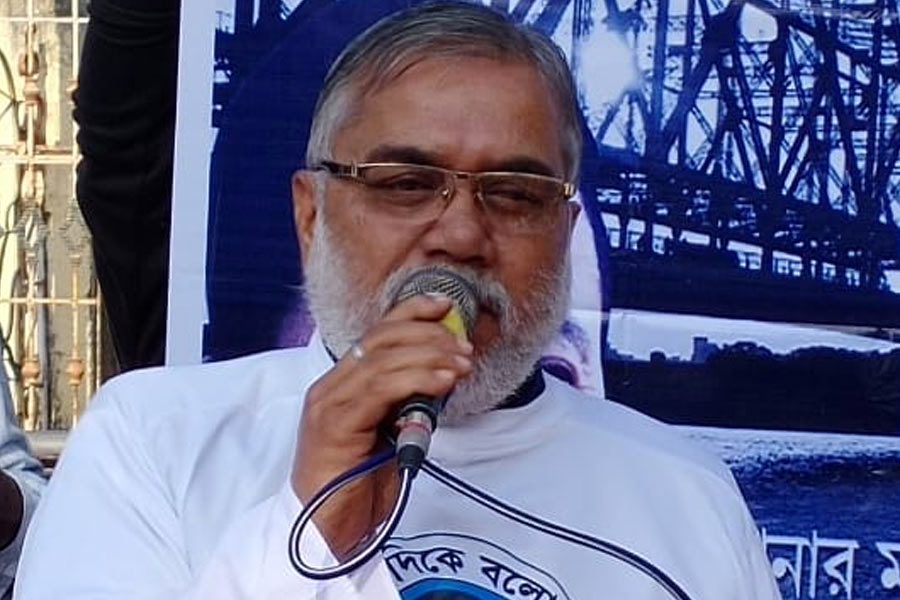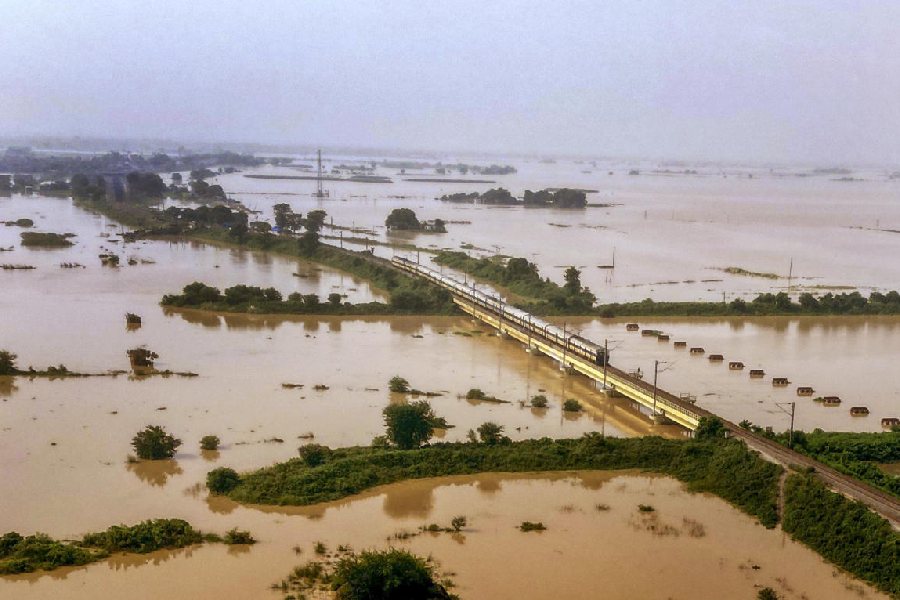For the Nepalese this must seem like the re-run of a show they’ve seen countless times before. Right from 1950 no prime minister has served a full term in office. Parliaments have inevitably been dissolved because of internal disputes in the ruling party of the day.
For now the different sides are holding public shows of strength. On Friday Prime Minister K. P. Sharma Oli held a rally in Dhangadi near the Uttar Pradesh border and on Saturday his supporters had staged a march through Kathmandu. His rivals Communist Party of Nepal (CPN-Unified Marxist-Leninist) are also on the streets and claim to have a parliamentary majority.
The immediate trigger of the current crisis was the ordinance promulgated by President Bidya Devi Bhandari on December 15 that amended Nepal’s Constitutional Council Act. This deepened the CPN’s festering fissures and the next day the party’s standing committee passed a resolution asking Oli to withdraw the ordinance. On December 19, Oli met party co-chair Pushpa Kamal Dahal ‘Prachanda’ to settle differences. That doesn’t seem to have worked.
The crisis has been building up for some time and has its genesis in the power-sharing dispute between Oli and Prachanda. Oli’s under pressure from Prachanda and other senior CPN leaders like former prime ministers Madhav Kumar Nepal and Jhala Nath Khanal to quit either the post of prime minister or party chairman.
The Chinese led by their Ambassador Hou Yanqi have been working intensively behind-the-scenes to keep the Communists united. They might have liked a scenario in which a trap would have been likely sprung at the forthcoming winter session of parliament with a no-confidence motion against Oli from within his own party. Some reports have suggested some 90 MPs had already brought in such a motion. Oli’s move to dissolve parliament checkmated this possibility. Inevitably, a split in the CPN looms.
The anti-Oli faction has taken the battle to Nepal’s Supreme Court which hears constitutional issues only on Fridays. At the latest sitting one judge, Hari Krishna Karki was forced to recuse himself as he was appointed advocate-general by Oli and is considered close to him. In fact, the prime minister has filled the court and it’s very likely that it will back his dissolution of parliament.
But Oli could be on weak ground constitutionally because there’s little room in the present constitution for a prime minister of a majority government to opt for mid-term elections. It’s reckoned that the hearings could last around eight to 10 weeks. That’s a long period in politics and Nepal could witness much turmoil during this time.
There will surely be a crisis if Oli’s rivals win their case and Parliament has to be reconvened. Oli’s position will be almost untenable. Also the position of President Bhandari will become very vulnerable as she has behaved more like a member of the Oli faction of the CPN rather than a bipartisan head of state of a democracy. There is murmuring that Oli may opt for an emergency at some stage.
India has taken the line that these political manoeuvrings are an internal matter for Nepal. But there’s no doubt it is monitoring developments closely. India has not really been able to reap the dividends, either politically or economically, of giving its blessings to the Nepali Congress-CPN (Maoist) deal signed in New Delhi in November 2005 which provided the basis for the April 2006 movement, which led to King Gyanendra’s removal.
This deal, which brought the Maoists into mainstream politics and subsequently to power, happened primarily because the late Girija Prasad Koirala (GPK) convinced India, that the king, by his coup of February 1, 2005, had violated his commitment to constitutional monarchy and multi-party democracy.
Bilateral relations, though, never really stabilised under the full-fledged multi-party democracy. GPK’s passing in 2010 combined with problems in the Nepali Congress and the lack of credible leaders. Besides that, there was the splintering of the Nepal Sadbhawna Party and the Left’s connections with China becoming more obvious as they gained political strength.
Nepal-China relations was gradually rising and have risen to 8,848.86m (the new height of Everest as determined by china and Nepal). Meanwhile, India-Nepal relations have been on a roller-coaster ride. There was the extreme high witnessed during Prime Minister Narendra Modi’s visit to Kathmandu in August 2014. Then it crashed to the depths during the stoppage of supplies at the border from September 2015. Those who know Nepal well will recall that the one ‘blunder’ India did, which should never have been repeated at any cost, was the blockade of 1989. The Nepalese have never forgotten that and it remains deeply ingrained in their psyche.
China’s overt attempts to capitalise on the Left’s rise to power has led to deepening ties between the CPN and the Chinese Communist Party (CCP) much to India’s dismay. A direct result of this CCP influence was the unification of the CPN (Maoist) and the CPN (United Marxist-Leninist) in May 2018 overseen by Guo Yezhou, the vice-minister of the CCP’s International Department.
Guo was sent to Kathmandu on December 27 to try and preserve left unity after Oli’s move. China is loathe to let the Left government fall. India, on the other hand, cannot trust any of the Left leaders. They are now ideologically susceptible to Chinese Marxist thought even if their “cadres” wouldn’t be able to spot the difference between Xi Jinping and Mao-Tse-Tung. This is India’s moment of mea culpa of 2005-06 and if not overtly, a course correction is now imperative.
It might be smart for India to revisit its earlier doctrine of constitutional monarchy and multi-party democracy and support the restoration the 1990 Constitution. Nepal, as well as the entire Himalayan frontier, is on the cusp of far-reaching change and, India needs to think up innovative ways to check Chinese influence. Keep in mind that the Bhutan king, the 17th Karmapa Lama and the next Dalai Lama will all be youngsters who will have religious ties with Swayambhu and Boudha Nath shrines in Kathmandu. India could recover lost ground in Nepal by looking for a new alternative rather than another unreliable substitute to Oli. Think back to the examples of King Zahir Shah of Afghanistan and Norodom Sihanouk of Cambodia.
Inevitably, there will be questions about who in royal family India can turn to. While King Gyanendra has been circumspect in his life as a private citizen, the same unfortunately cannot be said for his son, Crown Prince Paras. He has already suffered three heart attacks and his personal life has been such that the Nepalis may not accept him as King.
As early as in 2007, when relations between GPK and the Maoists had already started unravelling, in surprising repeated statements, GPK appealed to King Gyanendra and Paras to abdicate in favour of Paras’s son Prince Hridayendra. This, though, was rejected by the Maoists and the monarchy was abolished in May 2008. Could this appeal have been a belated recognition from the veteran leader that he had erred?
Prince Hridayendra is now 18. He is descended from the Indian princely family of Sikar, which belongs to the Shekhawat clan. Reports indicate that since the promulgation of the 2015 Federal Constitution, Nepal has seen sporadic demonstrations demanding the monarchy restoration.
India shouldn’t block such a development should Nepalis, themselves, want the monarchy to be restored. The religious card should be used like other arrows in the quiver to counter Xi Jinping’s aggressive moves and communist ideology in Nepal. The Nepali Congress and Rastriya Prajatantra Party (RPP) should take the lead for the restoration. This will also remind Nepali communist leaders that it was India who helped them in their quest for democracy.
Keep in mind that when the king was around many politically aggrieved leaders would run to him for help. The Chinese may also be reading the tea leaves after Guo’s visit. After all, Chinese realpolitik in Nepal was so fine-tuned at one stage that all official pronouncements would be addressed as “His Majesty” and “His Majesty’s Government”.
While Nepal’s kings of the past have been accused of promoting anti-India sentiment and King Gyanendra did not heed India’s advice to continue to “govern” with Sher Bahadur Deuba as his front China never had the kind of sway it has had over Nepal since 2006. India should be very wary of China’s machinations and carefully plan for the future without getting bogged down by any historical baggage.
Karan Singh was deputed by the Government of India to cajole King Gyanendra to leave. Maybe it’s time he visited Kathmandu again?
S. Ramesh is a former additional secretary, Cabinet Secretariat











